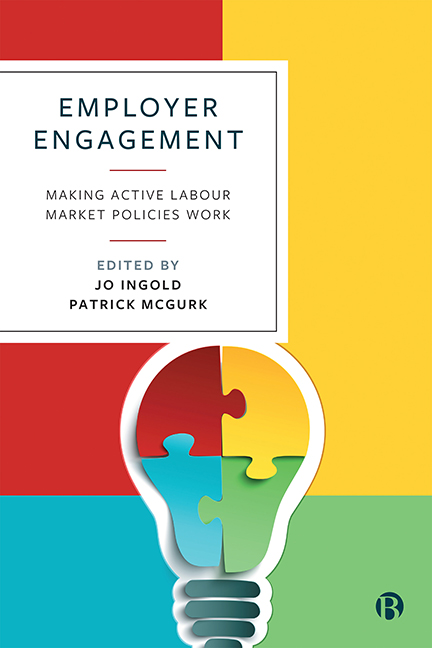Book contents
- Frontmatter
- Contents
- List of Figures and Tables
- List of Abbreviations
- Notes on Contributors
- Acknowledgements
- 1 Introduction: Why Is Employer Engagement Important?
- Part I The Macro Level: Political Economy and Policies
- Part II The Meso Level: Programmes and Actors
- Part III The Micro Level: Workplaces and Their Contexts
- Index
13 - Practice Case Study: Sephora’s Journey to an Inclusive Workplace and the ‘Let Us Belong’ Philosophy
Published online by Cambridge University Press: 18 January 2024
- Frontmatter
- Contents
- List of Figures and Tables
- List of Abbreviations
- Notes on Contributors
- Acknowledgements
- 1 Introduction: Why Is Employer Engagement Important?
- Part I The Macro Level: Political Economy and Policies
- Part II The Meso Level: Programmes and Actors
- Part III The Micro Level: Workplaces and Their Contexts
- Index
Summary
An inclusive workplace with a diversity of disabilities
Sephora North America created an adaptive and engaged employee culture in response to shortages of entry-level employees. This case study reveals the best practices Sephora used when developing an inclusive initiative aimed at hiring individuals with physical or cognitive disabilities. Our objective in this chapter is to illustrate an inclusive roadmap for companies seeking to operationalize similar inclusive initiatives which will transform their culture and improve their productivity.
Sephora, owned by LVMH Moët Hennessy Louis Vuitton, the world’s leading luxury goods group, was aggressively expanding in North America, which necessitated building a strong, loyal, and productive employee culture. A brand-new distribution centre in Las Vegas was created in 2019 to support the west coast while implementing an inclusive workforce that would decrease employee turnover. Our findings reveal that, through the development of an inclusive workforce on a large scale, Sephora achieved employee engagement while also improving productivity and employee retention. Our findings present the four-stage journey, namely to (1) establish the vision, (2) build the bridge, (3) launch and (4) optimize.
The real-world problems facing Sephora were the shortage of human capital and the need to have an engaged, adaptive, and innovative employee culture. This was in the context of a crisis in employee loyalty across America with a majority of employees not trusting their employer (Aityan and Gupta, 2012; Wharton, 2012). In the manufacturing industry, and especially for the distribution centre, retaining and hiring employees was one of the key human resource crises which elevated the essential role of the manager (Ellinger et al, 2002; van Hoek et al, 2020; The Conference Board, 2021). Furthermore, COVID-19 has led to employment shortfalls in migrant workers who fill seasonal operator positions, putting pressure on farming, service, and manufacturing sectors (Barrero et al, 2020; Corbishley, 2020; Maurer, 2021). Another impact of COVID-19 has been the increase in online shopping that increased distribution centres’ volumes. Hourly-paid employees working in these entry-level positions were rarely loyal to their employer and left for just a little better remuneration.
- Type
- Chapter
- Information
- Employer EngagementMaking Active Labour Market Policies Work, pp. 217 - 230Publisher: Bristol University PressPrint publication year: 2023



